How can jitter be compensated on an IP network that carries real-time VoIP traffic with acceptable voice transmission quality?
Which network topology is characterized by a link fate-sharing situation?
A)
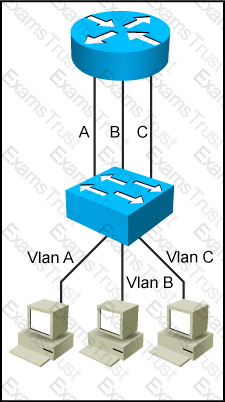
B) 
C) 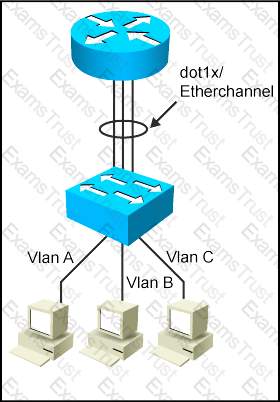
D) 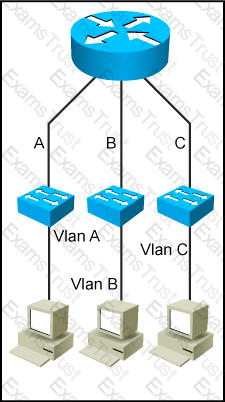
Which two statements about AToM are true? (Choose two)

In an OSPF network with 20 routers connected together with Ethernet cabling , which topology typically takes the longest to converge?
Which two design aspects should a metro service provider consider when planning to deploy REP for his backbone? (Choose two.)
Which two options describe the advantages of using DWDM over traditional optical networks? (Choose two)
Which two functions are performed at the distribution layer of the three-layer hierarchical network design model? (Choose two)
When a multiprotocol routing environment is designed to have several routers redistributing among the routing domains, how can routing loops be avoided?
A company requires to connect two data center sites using a hub-and-spoke design. There are 2000 remote sites. It is required to transfer MPLS labeled packets over the public Internet using one router at each remote site. These MPLS labeled packets must be encapsulated inside IP packets. Which solution must be used to simplify this network design?
Which two options are design considerations when introducing FCoE into an existing network? (Choose two)
Which OSPF design consideration, with regards to simplicity and address preservation, must be considered when connecting two Layer 3 switches directly using 10 GBASE-T cabling and formatting an OSPF neighbor adjacency?
Classify the OSPF Fast Network Convergence technique by dragging the techniques on the left and dropping them into the corresponding categories on the right.

Which DCI technology utilizes a “flood and learn” technique to populate the Layer 2 forwarding table?
Which statement about SDN framework environment is true?
Which two techniques are used in an OSPF network design to slow down the distribution of topology information caused by a rapidly flapping link? (Choose two)
Drag and drop the optical technology design characteristics on the left to the correct optical technologies on the right. Not all options are used.
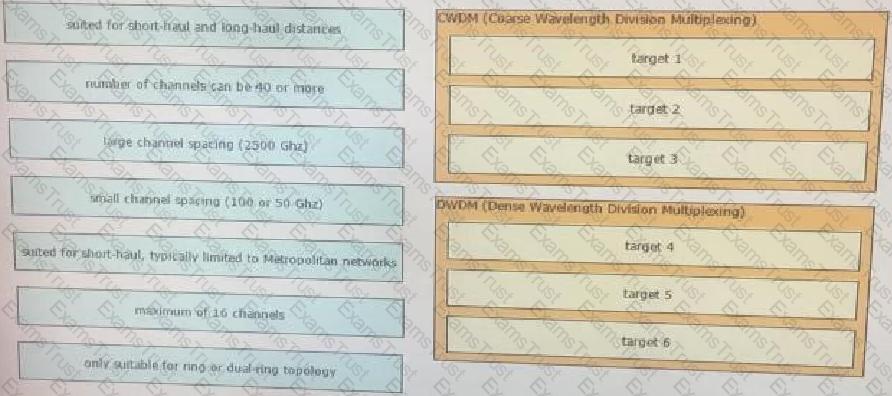
Across a large WAN network, there will be new video traffic being distributed from a single source at any given time however, the video source might originate from different parts of the multicast domain at different times . Which multicast technology provides for this multicast traffic to be distributed with optimal path selection to the source?
An operations engineer asks for your help with a new switching deployment. The engineer confirms that STP is enabled on an edge switch, and a particular port is connected to another switch. The switch is not receiving configuration BPDUs, although it appears that everything is functioning correctly in the network. What is the design explanation?
A service provider is designing a new backbone based on an IGP and MPLS what are two valid reasons for implementing MPLS-TE as well? (Choose two)
Refer to the exhibit.
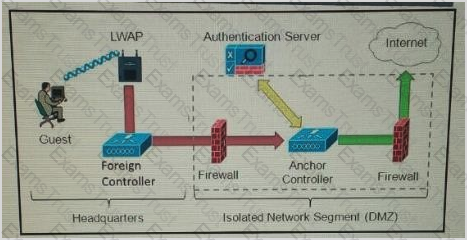
Which solution must be used to send traffic from the foreign wireless LAN controller to the anchor wireless LAN controller?
Which two application requirements are mandatory for traffic to receive proper treatment when placed in the priority queue? (Choose two)
You are designing an IPv4 any source multicast redundancy solution. Which technology ensures the quickest RP convergence?
You must make IGP redesign recommendations for a client that has old equipment, with low CPU power and memory, that they do not have budget replace. They are very concerned about CPU load on routers. They are using IS-IS as the IGP in a single l1 area and all routers are connected to each other with point-to-point links. Which method do you recommend to reduce or limit CPU overhead caused by IS-IS?
You are working on a network design plan for a company with approximately 2000 sites. The sites will be connected using the public Internet. You plan to use private IP addressing in the network design, which will be routed without NAT through an encrypted WAN network. Some sites will be connected to the Internet with dynamic public IP addresses, and these addresses may change occasionally. Which VPN solution will support these design requirements?
Refer to the exhibit.
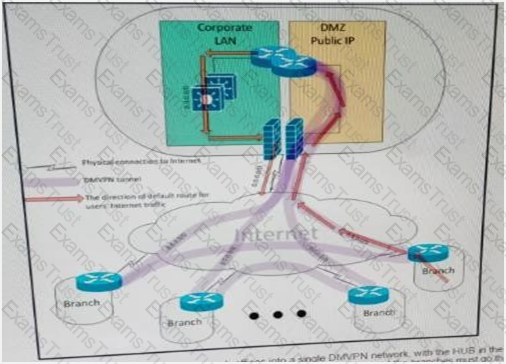
A customer interconnected hundreds of branch offices into a single DMVPN network, with the HUB in the main data center. Due to security policies, the customer requires that the default route for all Internet traffic from the users at the branches must go through the tunnel and the only connections that are allowed to and from the branch router over the local internet circuit are the DMVPN tunnels. Which two combined actions must you take on the branch router to address these security requirements and keep the solution scalable? (Choose two)
A network designer wants to improve a company network design due to multiple network crashes. Which technology would allow for the restore of a network connection without informing the Layer 3 protocol?
Which are two open-source SDN controllers? (Choose two)
Which are two data plane hardening techniques? (Choose two)
Drag the fast Reroute mechanism on the left and drop it onto the corresponding routing protocol on the right

A customer requests that you determine how much of their remote branch traffic into a central data center is related to a call manager that resides in the data center. Which solution do you recommend?
Which three reasons to deploy an IDS sensor in promiscuous mode when you design a security solution are true? (Choose three.)
What is a design benefit of PortFast?
A large ISP is analysing which IGP meets these following requirements
Network must be resilient against unstable MTU in one side of newly released transmission pieces of equipment
Network must support MPLS traffic engineering solution for future use
Which IGP must be selected and why?
Refer to the exhibit.

Company ACME is adding a Cisco TelePresence system for real-time collaboration and wants to ensure the highest user experience. Drag and drop the necessary QoS mechanisms from the left to the right in any order. Not all options will be used.
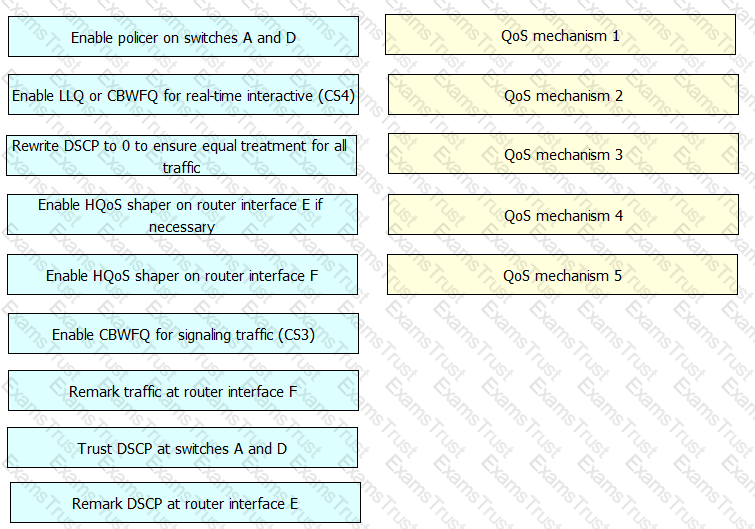
A healthcare customer requested that health statistics from their infrastructure devices are to be sent over their service provider MPLS network. Which protocol must be enabled?
